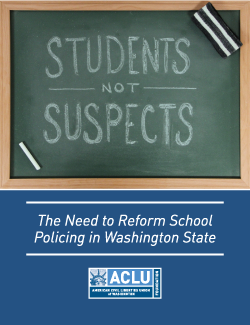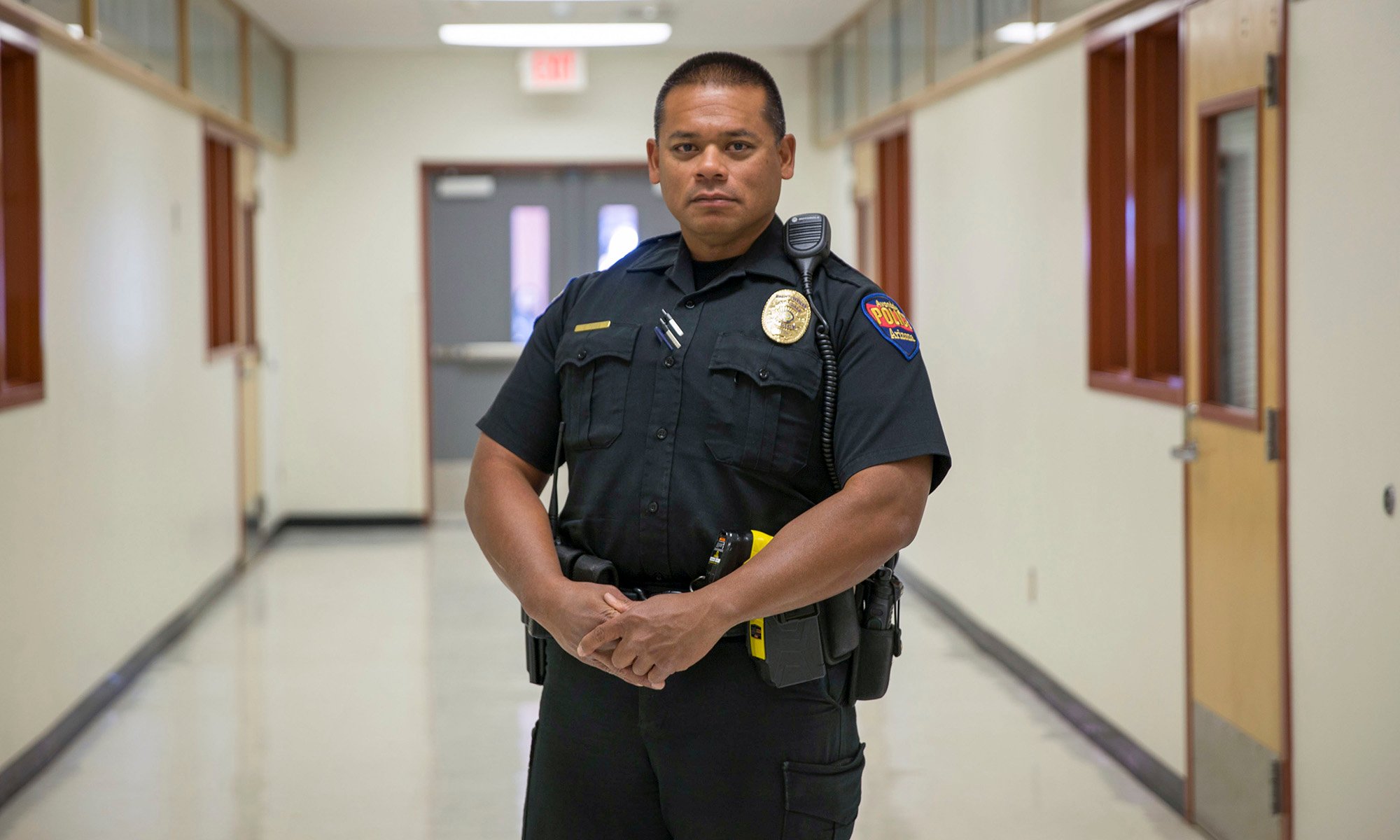Final Thoughts
I recently had a thought that isn't sitting with me well. It wasn't until recently that schools have been integrated inside of schools, but the amount of shooting has gone up since police have entered them. I don't have enough information on what schools were like without police in them but I have never heard of a very deadly shooting that has occurred. I'm sure that there have been some instances of a few casualties but no mass casualty shootings. If we are having police in the schools aren't they supposed to be safer and prevent all shootings from happening? I think that the short answer to this is no because police can't prevent bad people from being bad.
To answer my original research question: Are Student Resource Officers making schools safer? I think that this answer is generally a yes but in a few scenarios no. Generally, violent crime in America has been decreasing since the 90's and this includes violence in schools as well. Despite school shooting, schools are one of the safest places to be in, for most at least. Racial discrimination and hyper criminalization of black and latino youth is still a phenomena that exists especially in inner city areas. Are these black and latino youth committing real crimes or are they being overly policed? I think the answer could be somewhere in the middle, but for this group of people the new era of police in schools has been very negative for them.
Now that I'm more knowledgable about this issue I may want to argue if racism hasn't really gone away at all? It is touchy subject but are black and latino's still at a great disadvantage in schools? And if so in what ways specifically.
Something I will still wonder about in the weeks ahead is what our school systems will look like 20 years from now? Will police be in every single school? How many more school shootings will there be? And can we find a solution to school security that doesn't hyper criminalize students but also protects them at the same time?
Ben's ENG 121 Blogger
Thursday, July 12, 2018
Monday, July 9, 2018
Student Resource Officers Can’t Be Standardized
Hello readers, I would like to share with you that after further research some school districts have recently seem improvements of student-police relations from progressive SRO programs. While these practices could be adopted everywhere, the is no national standard or policy that SRO's must abide by. This is because they are agents of community oriented policing which will have different focuses and policies from region to region.
As addressed earlier on this blog site SRO’s have increased dramatically since shootings in the 90’s. One source told me that 42% of public high schools now have an SRO in them. While this may look like more safety from the outside looking in, students are still being criminalized for non-criminal behavior. As Dewey Cornell, a psychology professor at the University of Virginia put it, “If you put police officers in schools as guards, they will have little to do and they will not be in the high crime areas of our community where they are needed the most.” In an MSNBC article from 2013, the Obama adminstration gave $45 in federal grants to employ 356 new SRO's. It doesn’t look like there will be an insufficient amount of SRO’s any time soon. So if we have so many police in school, what are they doing to improve school safety?


Despite a the terrible tragedy of the Parkland Shooting in Broward County, Florida, all three of these schools have seem positive benefits from progressive programs. In Clayton County, weapons on campuses decreased by 70% and other positive effects were manifested but I think the greatest stat from this is that graduation rates have increased by 20%. Broward County says in one school quarter suspensions were down 66 percent and expulsions down by 55%. In Denver, total suspensions were down 60% and referral of youth to law enforcement of all youth, including youth of color, dropped 57%.



First Photo: www.pixel.nymag.com/imgs/daily/intelligencer/2018/02/22/22-school-crime-rates.nocrop.w710.h2147483647.2x.jpg
Second Photo:www. encrypted-tbn0.gstatic.com/images?q=tbn:ANd9GcRZXS2iiPltOZgpVYpA4b-9meF-5gqXhV_QrgPG1pmHG4pA2rPX
Friday, July 6, 2018
What do Student Resource Officers Actually Do?
The topic of Student Resource Officer's(SRO's) is a hot topic amidst a few school shooting earlier this year including the Parkland shooting in Florida which took 17 peoples lives. Currently, our nation has over 43,000 SRO's employed to protect the faculty and staff according to The National Center of Education. While the role of these officers isn't the same from school to school they try to uphold the position as part teacher, part counselor, and part cop. But where did these officers come from?
There weren't very many SRO's around until the 1990's in the wake of the Gun Free Schools Act of 1994 combined with the the Columbine High School Shooting in 1996. Prior to these events there were policies known as 'Zero Tolerance Policies' that were implemented to deter misbehavior in schools. However, this policy may have turned out to hyper criminalize students for minor infractions instead of deter them. Prior to officers in school, school administrators were the ones that had to deal with misbehavior before SRO's and often times this kept students out of the Juvenile Justice system.
 After further research it has come to my attention that the function of an SRO can be directly related to the social and educational advantage or disadvantage of the schools area. While they have many different roles, the SRO in disadvantaged areas tends to play the role of cop more than counselor and teacher. In these instances the safety of the students is of course their number one priority but at what cost to the student? These SRO's keep dangers outside the schools but inside the schools the zero tolerance policies may be compromising the trust students have in police. A 2011 study conducted by the Council of State Governments Justice Center and Public Policy Research Institute found that schools punish black and latino students more often and more harshly than other students, and that black students were four times more likely to receive a citation for minor misbehavior than other students.
After further research it has come to my attention that the function of an SRO can be directly related to the social and educational advantage or disadvantage of the schools area. While they have many different roles, the SRO in disadvantaged areas tends to play the role of cop more than counselor and teacher. In these instances the safety of the students is of course their number one priority but at what cost to the student? These SRO's keep dangers outside the schools but inside the schools the zero tolerance policies may be compromising the trust students have in police. A 2011 study conducted by the Council of State Governments Justice Center and Public Policy Research Institute found that schools punish black and latino students more often and more harshly than other students, and that black students were four times more likely to receive a citation for minor misbehavior than other students.
School administrators may believe that the SRO in their school has reduced misbehavior. But on another hand we have statistics that tell us these officers are getting them on track to be apart of the criminal justice system for minor offenses. So are the schools not safe or are officers being to strict with students? Furthermore, according to the National Center for Education Statistics in 2013 only 5% of serious disciplinary actions have involved possession of a weapon and yet there's a high rate of expulsions especially in disadvantaged areas. Some may suggest more SRO's are needed in schools, but I like this viewpoint from the Denver Post, "some lawmakers say they want the funds for safety training and not more armed officers." To offer a solution, if SRO’s focused the same amount of time on law enforcement as education, perhaps then SRO’s are making schools much safer. Greater trust between police and students may result as well. I wonder what exactly is safety training? Is it training the officers or the officers training the faculty and staff of the school to handle misbehaving students?
Citation:
Lynch, Caitlin G., Randy R. Gainey, and Allison T. Chappell. "The Effects of Social and Educational Disadvantage on the Roles and Functions of School Resource Officers." Policing, vol. 39, no. 3, 2016, pp. 521-535. ProQuest, http://0-search.proquest.com.patris.apu.edu/docview/1826809242? d accountid=84
Photo: www.cronkitenews.azpbs.org/wp-content/uploads/2018/04/sro3main-2000.jpg
There weren't very many SRO's around until the 1990's in the wake of the Gun Free Schools Act of 1994 combined with the the Columbine High School Shooting in 1996. Prior to these events there were policies known as 'Zero Tolerance Policies' that were implemented to deter misbehavior in schools. However, this policy may have turned out to hyper criminalize students for minor infractions instead of deter them. Prior to officers in school, school administrators were the ones that had to deal with misbehavior before SRO's and often times this kept students out of the Juvenile Justice system.

School administrators may believe that the SRO in their school has reduced misbehavior. But on another hand we have statistics that tell us these officers are getting them on track to be apart of the criminal justice system for minor offenses. So are the schools not safe or are officers being to strict with students? Furthermore, according to the National Center for Education Statistics in 2013 only 5% of serious disciplinary actions have involved possession of a weapon and yet there's a high rate of expulsions especially in disadvantaged areas. Some may suggest more SRO's are needed in schools, but I like this viewpoint from the Denver Post, "some lawmakers say they want the funds for safety training and not more armed officers." To offer a solution, if SRO’s focused the same amount of time on law enforcement as education, perhaps then SRO’s are making schools much safer. Greater trust between police and students may result as well. I wonder what exactly is safety training? Is it training the officers or the officers training the faculty and staff of the school to handle misbehaving students?
Citation:
Lynch, Caitlin G., Randy R. Gainey, and Allison T. Chappell. "The Effects of Social and Educational Disadvantage on the Roles and Functions of School Resource Officers." Policing, vol. 39, no. 3, 2016, pp. 521-535. ProQuest, http://0-search.proquest.com.patris.apu.edu/docview/1826809242? d accountid=84
Photo: www.cronkitenews.azpbs.org/wp-content/uploads/2018/04/sro3main-2000.jpg
Saturday, June 30, 2018
My main research question is: Are Student Resource Officers making schools safer? To my understanding these are essentially school police that have came into existence about 20 years ago. Security and other school staff have existed but not actual police officers. It is important for schools to remain safe, but are these officers making schools safer or maybe pushing kids out of school? There are rules like 'Zero Tolerance' policies that will suspend students for minor offenses. Are the officers protecting the students in this scenario? Or should other measures be taken that doesn't require a police officer to be on most school campuses? I believe databases and academic journals will have answers to the effects that Zero Tolerance policies have. Also, the rate or suspension and expels may be available for me to find. Prevention is another topic that I will research in depth. School shootings aren't the only thing I'll be looking into because these are very rare cases, instead I will aim to focus on the effect that Student Resource Officers have on high schools across all demographics, locations, and socio-economic areas.
https://youtu.be/HoKkasEyDOI
https://youtu.be/HoKkasEyDOI
Tuesday, June 26, 2018
Subscribe to:
Comments (Atom)